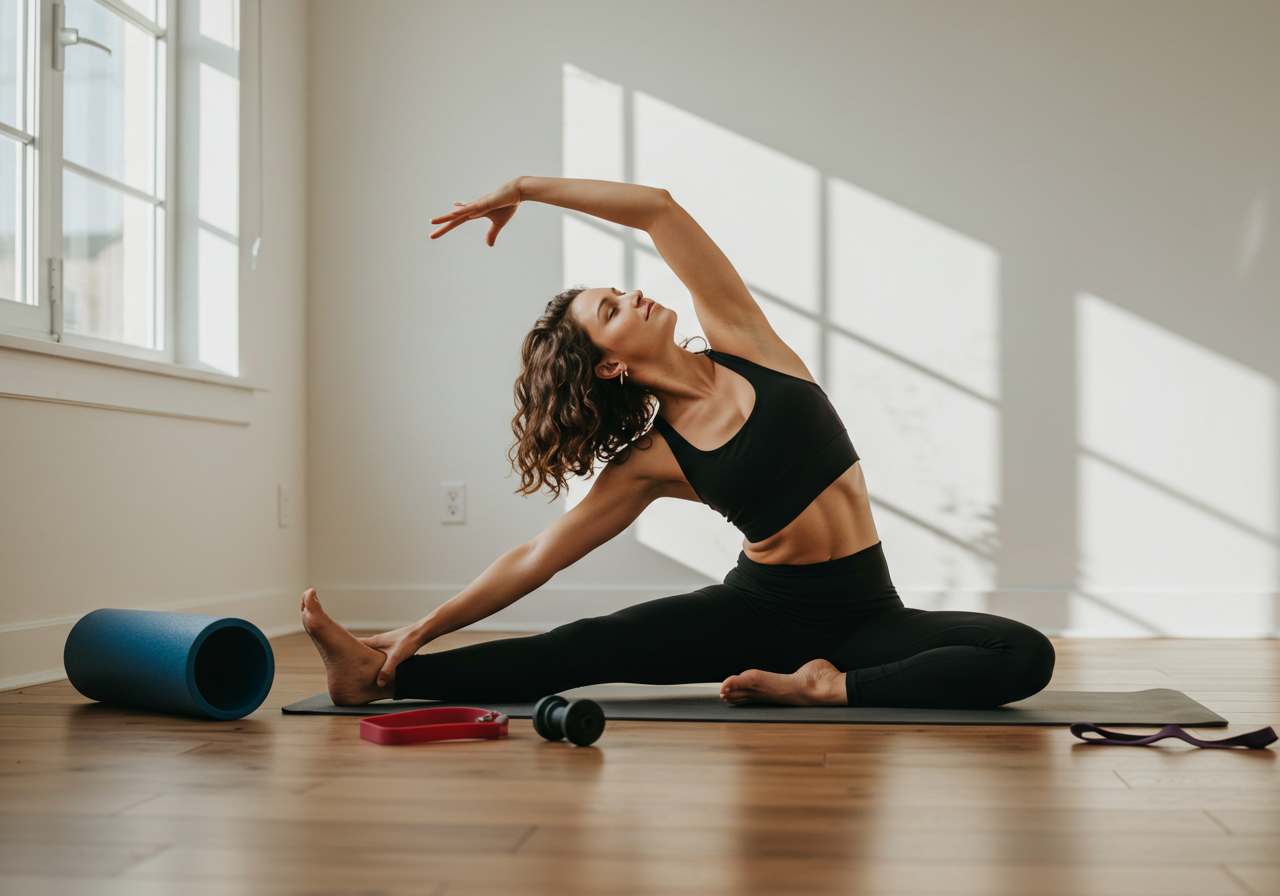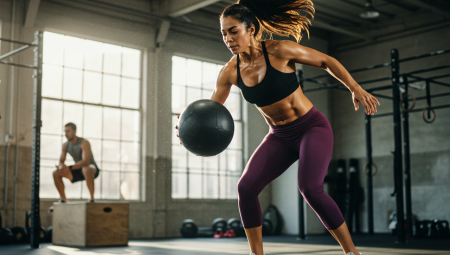
How to Improve Flexibility and Mobility?
First things first, stretching is truly your best friend.
Ever try to bend over and touch your toes only to feel like you’re wrestling with a stubborn rope? Regular stretching can completely rewrite that story. Incorporate dynamic stretches into your warm-up routine—think arm circles, leg swings, and gentle torso twists—to awaken your muscles just as a robust cup of coffee jump-starts your morning. Then, after your workout, move into static stretches that help lengthen those muscles and expand your range of motion. If you’ve been wondering, How to Improve Flexibility and Mobility? starting with a consistent stretching routine is an ideal first step.
Now, let’s dive into the world of yoga and Pilates.
These disciplines serve as a versatile fitness buffet for your flexibility needs. Yoga not only guides you to a state of inner calm but also gradually works out those tight hamstrings, shoulders, and back muscles—as if you’re peeling away layers of tension to reveal your full range of motion. In contrast, Pilates concentrates on building core strength and enhancing stability, which in turn supports better overall mobility. So if you’re still asking, How to Improve Flexibility and Mobility? consider adding these mindful practices to your regimen for a balanced approach to fitness.
Finally, don’t overlook the magic of foam rolling!
Think of foam rolling as a personal massage session for your muscles after a demanding day. By targeting those particularly tight spots, this self-massage technique improves blood circulation, eases soreness, and leaves you feeling remarkably looser. It’s the perfect complement to your stretching, yoga, and Pilates sessions. And if you’re on the quest for answers on How to Improve Flexibility and Mobility? integrating foam rolling into your daily routine can truly be a game-changer for your performance and recovery.
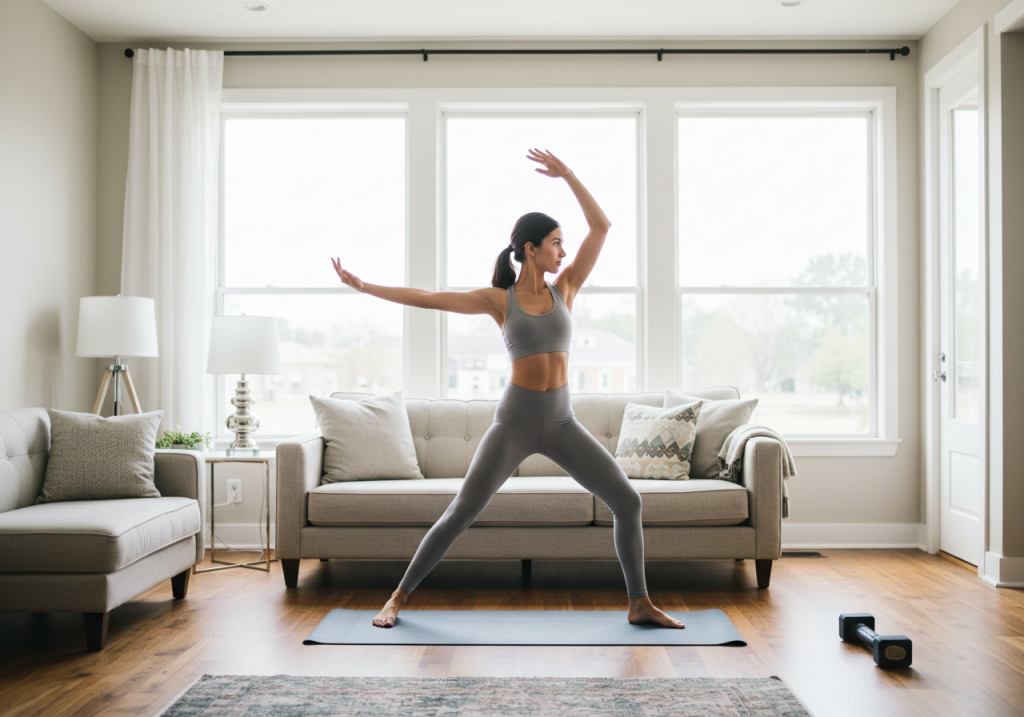
Unlock Your Body: Top 7 Proven Techniques to Boost Flexibility and Mobility
First up, stretching!
It might sound elementary, but committing to a regular stretching routine can completely transform your body’s movement. Think of it as oiling a squeaky hinge—each stretch releases tension from those stubborn tight muscles. Enhance your regimen by incorporating dynamic stretches during your warm-up and following up with static stretches after your workout. If you’ve ever wondered, How to Improve Flexibility and Mobility? the answer often begins with embracing a consistent stretching practice.
Next, consider foam rolling.
Imagine treating your muscles to a gentle massage that breaks down tight knots and boosts blood flow. Visualize it as rolling out dough—when you knead it, the dough becomes softer and more pliable, much like your muscles do under the right care. This self-massage technique is an excellent way to promote recovery and prepare your body for movement, answering the question, How to Improve Flexibility and Mobility? with simple yet effective self-care.
Don’t underestimate the power of breath.
Yes, you heard that right! Engaging in deep, controlled breathing exercises not only calms your mind but also helps release tension held within your muscles. Picture each deep breath as a gentle wave washing away stiffness, gradually making your body more relaxed and mobile. When exploring methods on How to Improve Flexibility and Mobility?, incorporating mindful breathing is a strategy that can lead to significant improvements.
Another fantastic method is yoga.
Yoga goes far beyond striking picturesque poses; it actively works on enhancing your range of motion while simultaneously building strength. Think of it as a graceful dance between your body and mind—each pose works to gently expand your flexibility and ease muscular tension. For those still asking, How to Improve Flexibility and Mobility? adding a regular yoga practice to your routine can be incredibly beneficial.
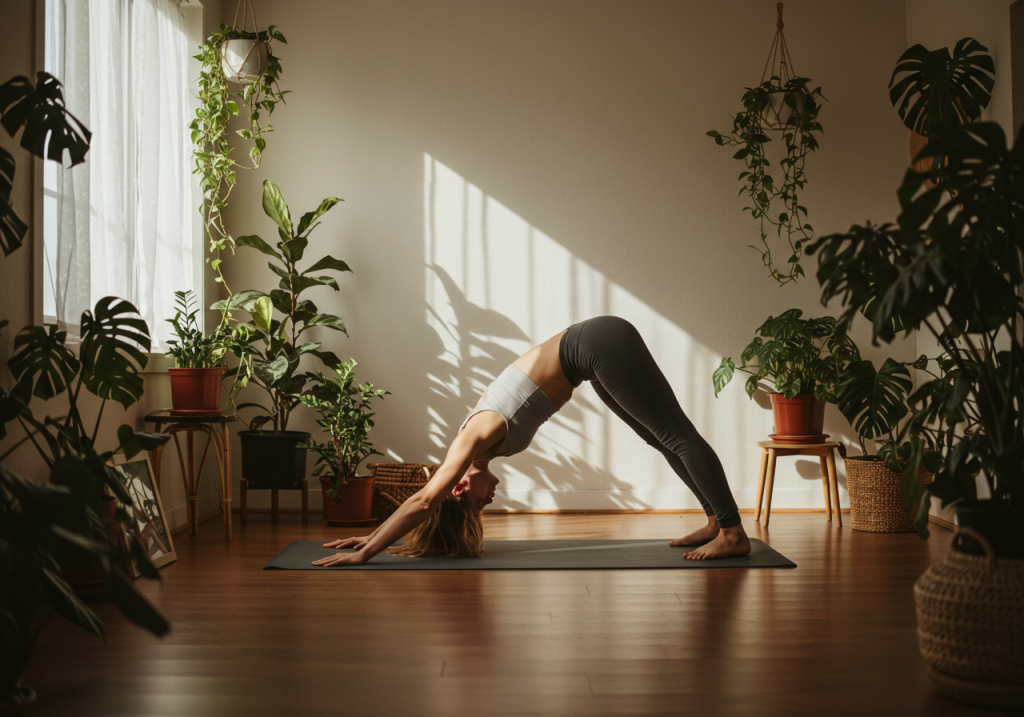
Pilates, anyone?
This method zeroes in on core strength and stability, both of which are crucial for effective mobility. Imagine it as laying down a solid foundation for a sturdy building—when your core is robust, your entire range of movement improves dramatically. If you’re curious about How to Improve Flexibility and Mobility?, integrating Pilates can provide that essential base for enhanced overall performance.
Lastly, don’t skip strength training!
Building muscle not only supports your joints but also contributes significantly to your overall flexibility. It’s akin to tightening the screws on a wobbly chair—a solid, well-structured body enhances both functionality and movement. Remember, if you’re searching for ways on How to Improve Flexibility and Mobility?, incorporating strength training into your routine can be a game-changing addition to your fitness strategy.
From Stiffness to Suppleness: Simple Daily Routines to Enhance Your Flexibility
First up, you need to incorporate some basic stretching into your morning routine.
Begin your day by setting aside five to ten minutes for gentle stretching exercises. Consider it a full-day warm-up that gradually awakens your muscles and jump-starts your blood circulation. Simple moves—like reaching high as if grabbing the sky or bending forward to touch your toes—can serve as a pep talk for your body, preparing it for the challenges ahead. If you’ve ever wondered, How to Improve Flexibility and Mobility?, starting your morning with consistent stretching is an excellent way to begin.
Next, don’t underestimate the power of walking.
A brisk walk not only gets your heart pumping but also naturally boosts your flexibility. Every step acts as a gentle nudge to your leg muscles and joints, encouraging them to loosen up. For an extra challenge, consider varying your route by walking on uneven surfaces such as a grassy park or a sandy beach. This simple activity is a great addition to your daily routine and helps answer the question, How to Improve Flexibility and Mobility? in a natural, enjoyable way.
Also, consider adding a daily routine of yoga or Pilates.
These practices are the secret sauce for enhanced flexibility. With each pose or controlled movement, yoga and Pilates work deep into muscles that often remain neglected during standard workouts. Rather than feeling like a stiff, rusty hinge, you’ll discover a newfound freedom in your movements. Both disciplines directly tackle the query, How to Improve Flexibility and Mobility?, by promoting balanced strength and suppleness throughout your body.
Finally, mobility drills can become your best friend.
Incorporate mobility drills into your routine to move your joints through their full range of motion, effectively combating stiffness. Think of these exercises as oiling the gears in a well-tuned machine—when every joint is properly lubricated, your movements become smoother and more efficient. If you’re still asking, How to Improve Flexibility and Mobility?, targeted mobility drills are a proven
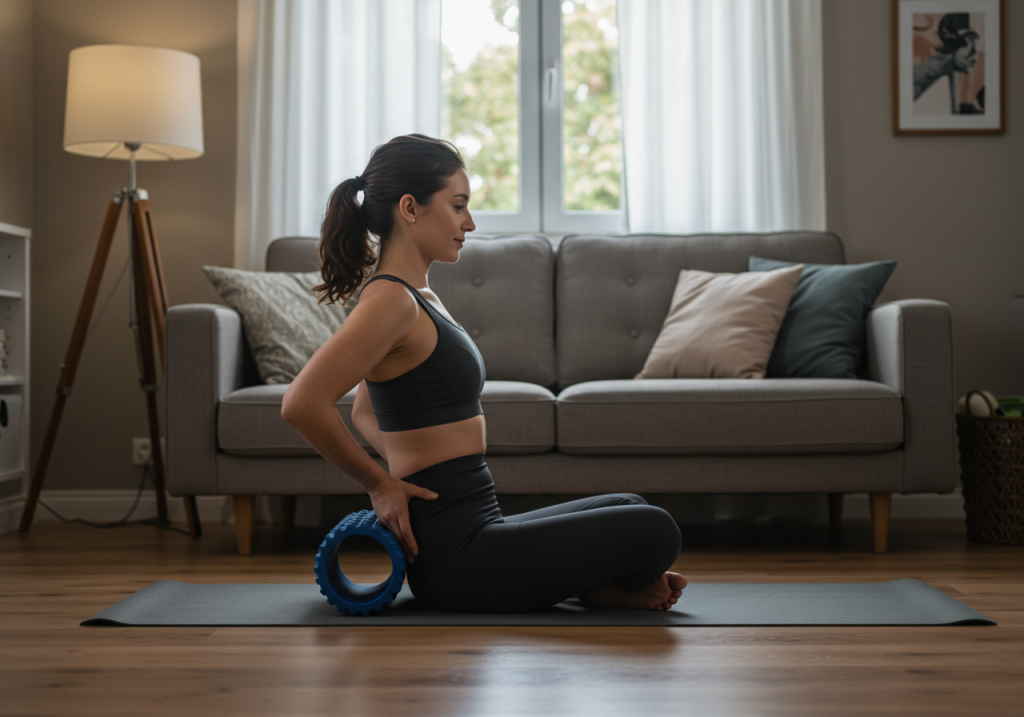
Stretch Your Limits: Expert Tips for Achieving Greater Mobility and Flexibility
First off, consistency is key.
Think about it—would you expect to run a marathon after just a week of training? The same principle applies to flexibility. Committing to a daily stretching routine, even if it’s just 10 minutes, can yield incredible results over time. Picture your muscles waking up in the morning—wouldn’t you rather have them feeling refreshed instead of stiff and groggy? If you’re wondering, How to Improve Flexibility and Mobility?, the answer begins with making stretching a non-negotiable part of your routine.
Next, don’t skip your warm-up.
Just like you wouldn’t bake a cake without preheating the oven, you shouldn’t jump straight into deep stretches without getting your blood flowing. A proper warm-up, such as brisk walking, jumping jacks, or arm circles, increases circulation and preps your muscles for movement. If you’ve been searching for ways on How to Improve Flexibility and Mobility?, prioritizing a solid warm-up before stretching will make a noticeable difference.
Ever heard of the “hold-it-just-a-bit-longer” technique?
Holding each stretch for at least 30 seconds allows your muscles to fully relax and extend, much like a sponge absorbing water—it just needs time to soak in. For an added boost, incorporate foam rolling or use a massage ball to work out stubborn knots and improve your overall range of motion. If How to Improve Flexibility and Mobility? is on your mind, making this technique a habit will help unlock greater movement and comfort in your body.
And let’s not forget the power of mindfulness.
When stretching, pay attention to your breath. Deeply inhale, then slowly exhale, as if you’re inflating and deflating a balloon. This simple breathing technique not only enhances relaxation but also allows your muscles to stretch more effectively. By syncing breath with movement, you’ll elevate your flexibility routine and experience deeper mobility gains.
By integrating these expert-backed tips into your daily life, you’ll stretch beyond your current limits, unlocking newfound flexibility and mobility that leaves you feeling strong, agile, and ready for anything.
Move Freely: The Best Exercises for Enhancing Flexibility at Any Age
So, what are the most effective exercises to boost flexibility? Let’s dive in!
First up, we have good old static stretches.
Think of these as a soothing reset for your body after a long day. Simple yet powerful moves—like the classic hamstring stretch, shoulder rolls, or a gentle forward fold—can be done anywhere, anytime. They help relax tense muscles while improving range of motion. Whether you’re unwinding after work or easing into the evening, static stretching is a fantastic way to maintain mobility and prevent stiffness.
Next, incorporate dynamic stretches into your routine.
Unlike traditional static holds, dynamic movements involve controlled motions that actively engage your muscles. Exercises like leg swings, arm circles, and torso twists increase blood flow and prep your body for movement. Think of them as the perfect warm-up before a workout—or even before playing with the grandkids. These movements keep your body agile and ready for action, no matter what’s on your agenda.
But wait, there’s more—yoga and Pilates are game-changers for flexibility.
These practices aren’t just fitness trends; they’ve been helping people move better for centuries. By emphasizing breath control, core engagement, and fluid movement, yoga and Pilates unlock tight muscles, improve posture, and enhance overall mobility. Imagine yourself flowing effortlessly through poses, bending and stretching like a graceful willow tree. That’s the kind of freedom you can achieve with consistent practice.
Don’t overlook the impact of everyday movements.
Flexibility isn’t only built in a workout session—it’s woven into daily life. Squatting to pick something up, reaching for a high shelf, or even twisting to grab something from the back seat of your car all contribute to maintaining mobility. It’s about finding small opportunities to stretch and move throughout your day. After all, flexibility isn’t just for athletes—it’s for anyone who wants to move freely, stay active, and enjoy life to the fullest.

Flexibility Matters: Discover the Surprising Benefits of Improved Mobility
First off, think about how flexibility influences your everyday life.
When your body moves with ease, even the simplest tasks—like bending to tie your shoes, reaching for groceries, or keeping up with your kids—become effortless. Instead of just getting through the day, you’re actively enjoying it! Plus, improved mobility plays a key role in injury prevention. Flexible muscles and joints are better equipped to absorb shock, reducing the risk of strains, sprains, and unexpected mishaps that could set you back.
Let’s not overlook the mental benefits!
Engaging in flexibility exercises, such as stretching or yoga, is like hitting the refresh button on your mind. Many people find that dedicating time to mobility work reduces stress, improves focus, and enhances overall well-being. It’s as if you’re lifting an invisible weight off your shoulders, allowing for clearer thoughts and a more balanced mood. The connection between body and mind is undeniable—when you move better, you feel better.
Now, imagine this scenario:
Your friends invite you for a spontaneous game of frisbee or a weekend hike, and instead of hesitating due to stiffness or discomfort, you jump right in! Improved mobility doesn’t just enhance physical function—it also boosts confidence and encourages a more active social life. Feeling capable in your body makes you more likely to embrace new experiences, leading to stronger relationships and more fulfilling moments.
So, if you’re still questioning whether flexibility should be a priority, think of it this way: improved mobility isn’t just about physical ability—it’s about saying “yes” to life’s little joys and moving through each day with energy, ease, and excitement!

